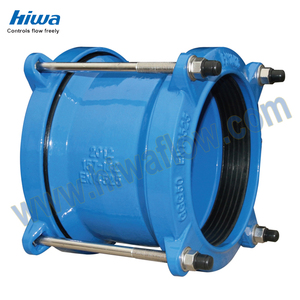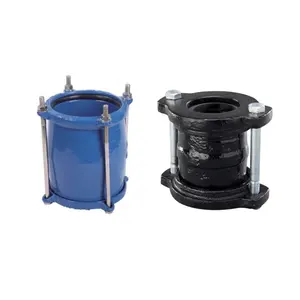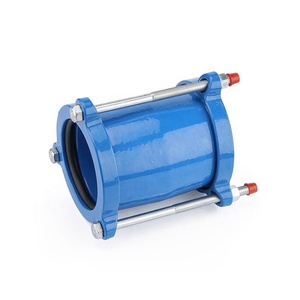(53 products available)













































































































































































Couplings allow the enhancement of the power transmission system's operational efficiency by promoting smooth torque and vibration transition. A Rilsan coupling refers to a non-metallic, dielectric, flexible coupling made of Rilsan, a high-performance thermoplastic. It features strength and durability, making it ideal for various industrial applications. Its resistance to chemicals and extreme temperature, along with lightweightness, makes it an exceptional choice compared to metal couplings. The most common types of Rilsan couplings include the following:
Duraflex couplings are flexible and robust couplings typically constructed by a hard polymer and a flexible elastomer. They offer durability, strength, and flexibility for angular, parallel, and axial misalignment compensation. This coupling is lightweight and requires no maintenance, making it a hassle-free item. Its V shock absorption is useful for reducing wear and tear on connected equipment. Hence, this coupling is popular in conveying fans, pumps, and electric motors, among other items.
Rilsan Tommy couplings are usually used for the quick release of hose sections. They enable rapid and simple connection and disconnection of polyurethane and PVC hoses without wasting time. A sideworking operation enables the compact design to work in limited spaces. The perform safety interlocks that prevent unintended disconnection under high pressure. Because of their lightweight and sturdy structures, Tommy couplings are suitable for construction, mining, and agricultural applications requiring fast fluid conveyance.
Antistatic Rilsan couplings are essential in hazardous environments where static electricity discharge could cause explosions or ignition of flammable substances. These couplings are manufactured to inhibit static electricity build-up, thus minimizing the risks associated with electrostatic discharge. They are predominant in industries dealing with chemicals, petrochemicals, grains, and powders. These industries include those exposed to volatile substances that permit workers' safety and equipment protection.
Materials and durability of couplings are critical in ensuring they work efficiently in a transmission system. The longevity of a coupling influences maintenance costs and operational downtime and determines what environment or application can be handled.
A Rilsan coupling is mainly constructed of Rilsan, a high-performance thermoplastic derived from polyamide 11. Rilsan offers stunning resistance to a wide array of chemicals. hence, this makes it ideal for diverse industries. These include the one that handles aggressive fluids, oils, and chemicals. In addition, Rilsan is lightweight, which greatly reduces the overall system's weight and increases transportability and ease of installation within hard-to-reach areas.
Besides, Rilsan's flexibility allows it to absorb vibrations, shocks, and misalignments, converting these energies into a smooth operation and protecting the connected equipment from damage. This minimizes wear on pumps, motors, and other machinery, increasing their lifespan. Rilsan couplings also come with anti-static and Tommy designs, which are usually made using this tough thermoplastic, enhancing reliability in static-sensitive environments. These environments include chemical processing plants and grain handling facilities.
The enormity of durability in Rilsan couplings makes them highly reliable on end users in various industries. They are constructed to perform continuously while withstanding stress, corrosion, and signal wear produced in dynamic environments. Given Rilsan's strong resistance to thermal degradation, these couplings maintain functional integrity in extreme temperatures. They can remain in extreme temperatures without deforming, diminishing performance, or becoming brittle. Because of this thermal resistance, Rilsan couplings can be used in engineering, automotive, aerospace, and manufacturing applications.
Further, their resistance to humidity also protects them from possible degradation. The inherent flexibility of Rilsan permits coupling to accommodate diverse degrees of misalignment, thereby minimizing stress concentration on the components. Such misalignments may be caused by vibrations or shocks generated within the system. For this reason, the antistatic, Tommy, and Rilsan couplings effectively reduce the destruction of connected machinery, thus extending its useful life and decreasing maintenance and replacement costs.
When selecting appropriate Rilsan couplings for a certain application, one must consider specific requirements and performance characteristics. Below are the key factors to consider.
Static electricity can be dangerous in chemical plants and other hazardous environments that Rilsan couples can easily handle. Couplings reduce all static electricity's harmful effects, assuring safety in explosive or flammable places. In any situation, static discharge may harm the materials being carried. Anti-static couplings minimize these dangers by discharging static electricity safely and efficiently.
Evaluate the coupling's ability to sustain the motor's and driven equipment's load and torque. Variable torque and load coupling will require different applications to accommodate. Rilsan couplings, in particular, can accommodate a vast torque range due to their flexibility and robust material construction.
Rilsan couplings usually give excellent performance and stability in extreme temperature conditions. However, the application calls for it; specifying the correct coupling for extreme temperature environments is important, especially when the operational temperatures are beyond the normal ranges. PVC hose may have a couplings that can withstand higher temperatures.
Couplings, especially those used in chemicals, petroleum, and associated industries, must be resistant to chemicals. Couplings made of Rilsan can resist many chemicals. The list includes acids, solvents, and oils, making them appropriate for diverse industrial applications. Ensure the coupling selected can withstand the specific chemicals it will encounter in operation.
The ability of a coupling to compensate for misalignment is critical in determining its performance and durability. Rilsan couplings are designed to accommodate angular, parallel, and axial misalignments. This deviation helps relieve stress on connected equipment and enhances the system's overall efficiency. Identifying the type and degree of misalignment in the application will guide selecting a coupling with suitable flexibility and axial or angular offset capability.
The Rilsan coupling has a broad and important use in many operating spaces. Its strength, flexibility, and resistance to harsh environments make it a popular choice across industries. Below are the key scenarios in which Rilsan couplings are commonly employed.
Rilsan couplings are critical components in simplifying operations in chemical processing. This industry works with many aggressive substances and chemicals, which demand coupling materials with high resistance to corrosion. Rilsan couplings, constructed from thermoplastic, easily withstands these chemicals, ensuring stable operation while conveying materials.
Farming equipment often operates under rough and volatile weather conditions. Rilsan couplings are widely mounted on tractors, harvesters, and irrigation instruments due to their durability and flexibility. These couplings effectively absorb shocks and vibrations, enhancing the smooth operation of power transmissions and reducing the wear and tear on associated components.
The food and beverage industry requires coupling that meets strict hygienic standards. These industries use Rilsan couplings frequently due to their resistance to chemicals. These chemicals are normally used for cleaning and sanitizing. Additionally, they are durable enough to withstand the rigorous washing processes in this industry without degrading or corroding. Henceforth, this makes them safe for use in food and beverage applications.
In the pharmaceuticals industry, static electricity can lead to contamination or an unsafe environment. Hence, Rilsan anti-static couplings become very useful in this industry. They discharge static electricity safely, reducing contamination risk and keeping a safe working environment.
Mining operations characterized by extreme conditions, including dust, moisture, and corrosive environments, predominantly use Rilsan couplings. The couplings required for hose connections, slurry transport, and other mining activities have great resistance to wear and tear. Plus, their ability to absorb shock ensures that equipment remains in good shape.
Moreover, their lightweightness benefits users to have better coupling installations in mining conditions. Installation in remote or difficult-to-access spaces becomes more bearable with a lightweight coupling.
The chemical processing industry is involved with many highly volatile chemicals. Hence, even a small static discharge can create an unsafe posture. This is where the Rilsan anti-static coupling becomes valuable by discharging static electricity securely and efficiently. Minimizing the electrostatic discharge will minimize contamination, protect personnel, and increase operational safety, making them essential for this industry's applications.
This durable thermoplastic coupling absorbs vibration, shock, and misalignment better than rigid metal couplings. It protects the connected machinery from wear, improving performance and durability.
Another advantage of Rilsan couplings is that they require little to no maintenance. They do not need lubrication like metal couplings do. They do not corrode or rust, making them easier to maintain in hostile environments and cheaper for long-term use.
Yes, Rilsan couplings can endure an extremely broad temperature range. Despite this, it performs outstandingly in both high and low temperatures. Always consult the coupling's datasheet for specific temperature limits to ensure optimum performance.
Couplings link and secure different hose sections so that fluids, slurries, or air can be conveyed safely and efficiently. In mining operations, they withstand tough situations. For example, Tommy Rilsan couplings provide easy hose separation and quick repairs or replacements without disrupting long-term work.